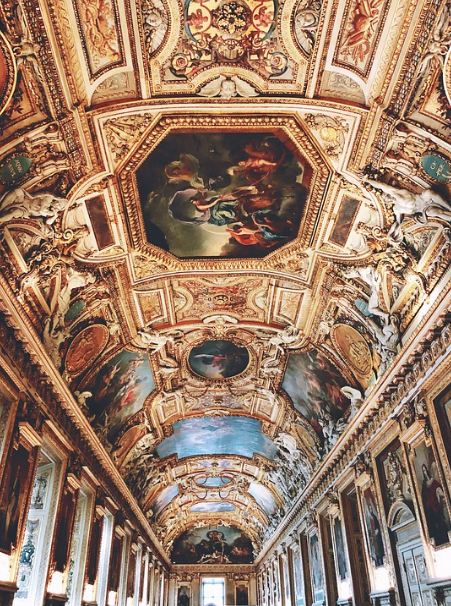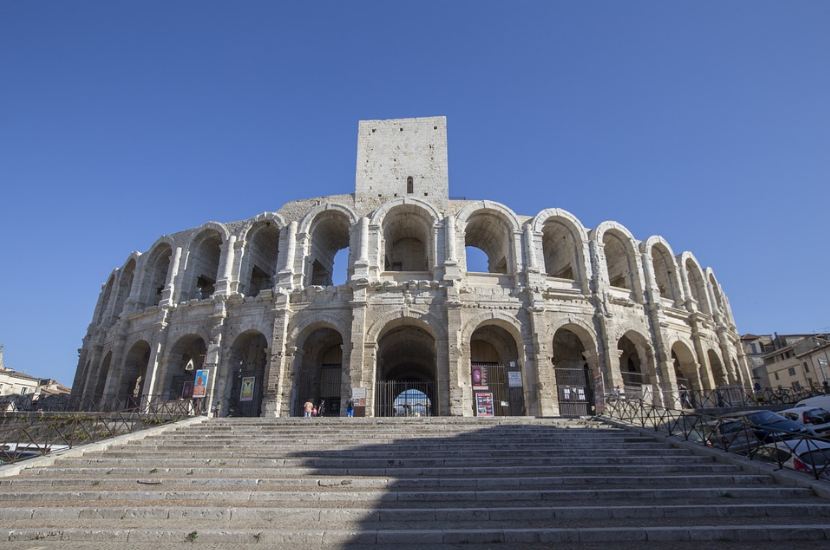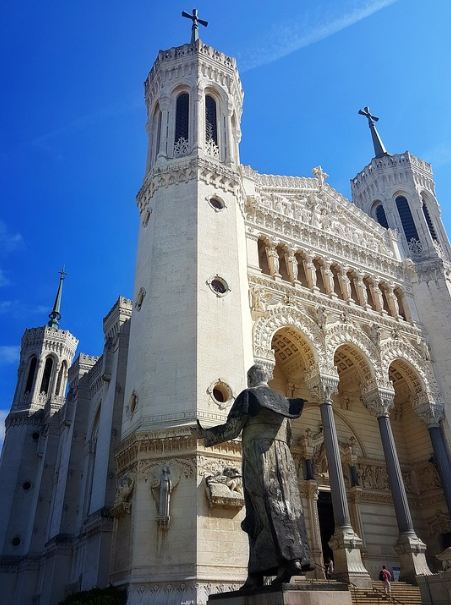So, you’ve decided to move to France? Oui bien sûr!
Most likely, you’d be living in your dream home, a spherical glass structure with a view of rich purple Provence lavender fields, a drywall-textured kitchen ceiling, and a balcony where you could spend days reading your favorite books. Nothing beats being surrounded by brioches, wine, and wonderful art galleries like the Louvre and Pompidou.
You’ll never be bored with dozens of UNESCO World Heritage Sites and the rest of Europe right outside your door. France is full of incredible sights to see and experiences to have, and each region of the country has something unique to offer its visitors. Here is a list of the top ten famous French buildings to help you decide where to go!
#1 Eiffel Tower
The Eiffel Tower has to be at the top of the list of notable French buildings to visit. This iconic tower, which stands tall in the heart of Paris, attracts roughly 7 million visitors each year. This was built in 1889 to serve as the gateway to the World Fair, was supposed to be dismantled after 20 years, but its architect, Gustave Eiffel, pushed to give it a new function and spare it from demolition. Before the Chrysler Building in New York, the Eiffel Tower was the world’s highest building, 324 meters tall with its antenna.
You’ll be able to choose how much of this iconic French building you see when you visit. Wander around its base, admiring some of its architectural intricacies and browsing the gift store, or take the stairs, where you’ll be treated to incredible views and can even buy a drink while gazing out over Paris. Whatever portion of the Eiffel Tower you visit, you’ll learn a lot about its interesting history and come away with a deeper admiration for this iconic structure. This is would be the most place for a romantic evening. Invite your date, take advantage of global flower delivery and have a good time.
#2 Palace of Versailles
The Palace of Versailles is just situated outside of Paris, was originally a hunting lodge and subsequently a seat of power. It is a gorgeous French structure with a rich history to impart. The Palace of Versailles is now a museum, comprises several different points of interest, including the palace itself, the gardens, and the park, providing lots to see during your visit.
The Hall of Mirrors, which is 73 meters long and contains 357 mirrors that sit opposite arched windows and reflect the beautiful gardens, is one of the Palace of Versailles’ highlights. You can also enjoy a variety of statues and busts as you walk down the corridor; interestingly, each one of them has its own unique story to share.
#3 The Louvre Museum
The Louvre Museum, home to the world’s most famous artwork, the Mona Lisa, is a must-see for all visitors. It is the world’s largest art museum, and the glass triangle at its entrance is instantly identifiable. Around 38,000 works of art, including statues, monuments, and paintings, are displayed in the museum, dating from the ancient era until the twenty-first century.
The Louvre began with 573 paintings in August 1973 and has subsequently grown. In 2019, almost nine million people visited the Louvre. Visitors today can see sculptures such as Venus de Milo’s Winged Victory of Samothrace, paintings such as The Raft of the Medusa, Liberty Leading the People, and much more in the museum. The Mona Lisa is the most popular tourist attraction, and it is on exhibit all year unless renovations are taking place.
#4 Cathédrale Notre-Dame de Laon
The Laon Cathedral, or Cathédrale Notre-Dame de Laon, is one of the finest Ogival/Gothic architecture examples from the 12th and 13th centuries. Equally exquisite interiors complement the carved oxen on the building’s exterior. With its six massive towers that reach over four floors high, the cathedral commands an intimidating presence above Laon. It’s also worth looking at the stained glass windows and the choir grille. In 1840, the Cathedral of Laon was designated as a “Monument Historique.”
#5 Chateau du Chambord
The magnificent Chateau du Chambord, the largest castle in the Loire Valley, is a must-see French structure. The castle was never completed as a hunting lodge for Francis I in the 16th century, but it was instantly recognizable because of its French Renaissance design.
Chateau du Chambord, now a UNESCO World Heritage Site and a major tourist destination, was formerly the site of royal feasts and hunting parties, with many illustrious visitors staying within its walls. The double helix staircase is inspired by Leonardo da Vinci and allows two people to traverse between floors without seeing each other, is one of the castle’s features.
#6 Mont-Saint-Michel
Mont-Saint-Michel is part of an ever-changing scenery that must be seen to be believed, as it is surrounded by the world’s most dramatic tidal changes. You can get to the mount by crossing the bay when the tide is out, but it’s preferable to do so with an experienced guide because gauging the tides is practically impossible, and when they come in, the water level rises quickly.
The abbey that rises atop Mont-Saint-Michel is its most noticeable feature. The abbey, founded in 966, has stood the test of time and can be accessed by going up a winding road past shops, restaurants, and museums.
#7 Arles Amphitheatre
The Arles Amphitheatre, which has stood since 90AD in the heart of the lovely city of Arles, is a remarkable example of Roman construction. This theater had a capacity of roughly 21,000 spectators and had two tiers, spectacular archways, and a well-designed system of galleries, doors, stairways, and corridors.
Gladiator clashes, chariot races, and theater performances were among the events, and the audience was divided according to social standing. Arles Amphitheatre was converted into a fortress after the Roman Empire fell apart, with 200 homes, two chapels, and a communal square.
#8 Monastere Royal de Brou
The Royal Monastery of Brou, or Monastere Royal de Brou, is a beautiful church surrounded by three monastery structures and three cloisters. Margaret of Austria commissioned it upon the death of her husband. She envisioned three big, extravagant tombs at the monastery: one for her husband, one for his mother, and one for herself.
Today, visitors can visit both the church and the museum, which houses religious statues from the 13th to the 17th centuries, as well as artworks from the 16th to the 20th century.
#9 Abbaye Saint Martin du Canigou
The Abbaye Saint Martin du Canigou, perched atop Canigou Mountain, was founded in 1009 by Guifred II, Count of Confluent, and Cerdanya. The abbey has a beautiful view of Cady Valley, and visitors can walk inside the ancient structure while being surrounded by nature.
Only guided tours are permitted because the site belongs to the Communauté des Beatitudes (Community of the Beatitudes). Early Romanesque paintings, a vaulted crypt, and the beautiful abbey itself are all worth seeing. Tourists, as well as people seeking religious or spiritual counsel, are welcome.
#10 Basilique Notre Dame de Fourviere
The Basilique Notre Dame de Fourviere, a minor basilica dedicated to the Virgin Mary, is a prominent feature of Lyon’s skyline.
The Virgin Mary is revered in Lyon because she is credited with saving the city from the bubonic plague in 1643. Every December 8, the day of the Immaculate Conception, the city holds a Festival of Lights to honor Mary. The magnificent, carefully crafted interior decor is sure to take visitors’ breath away. Two skillfully crafted churches, various sculptures, stained glass windows, and captivating artwork adorn the basilica’s walls.





